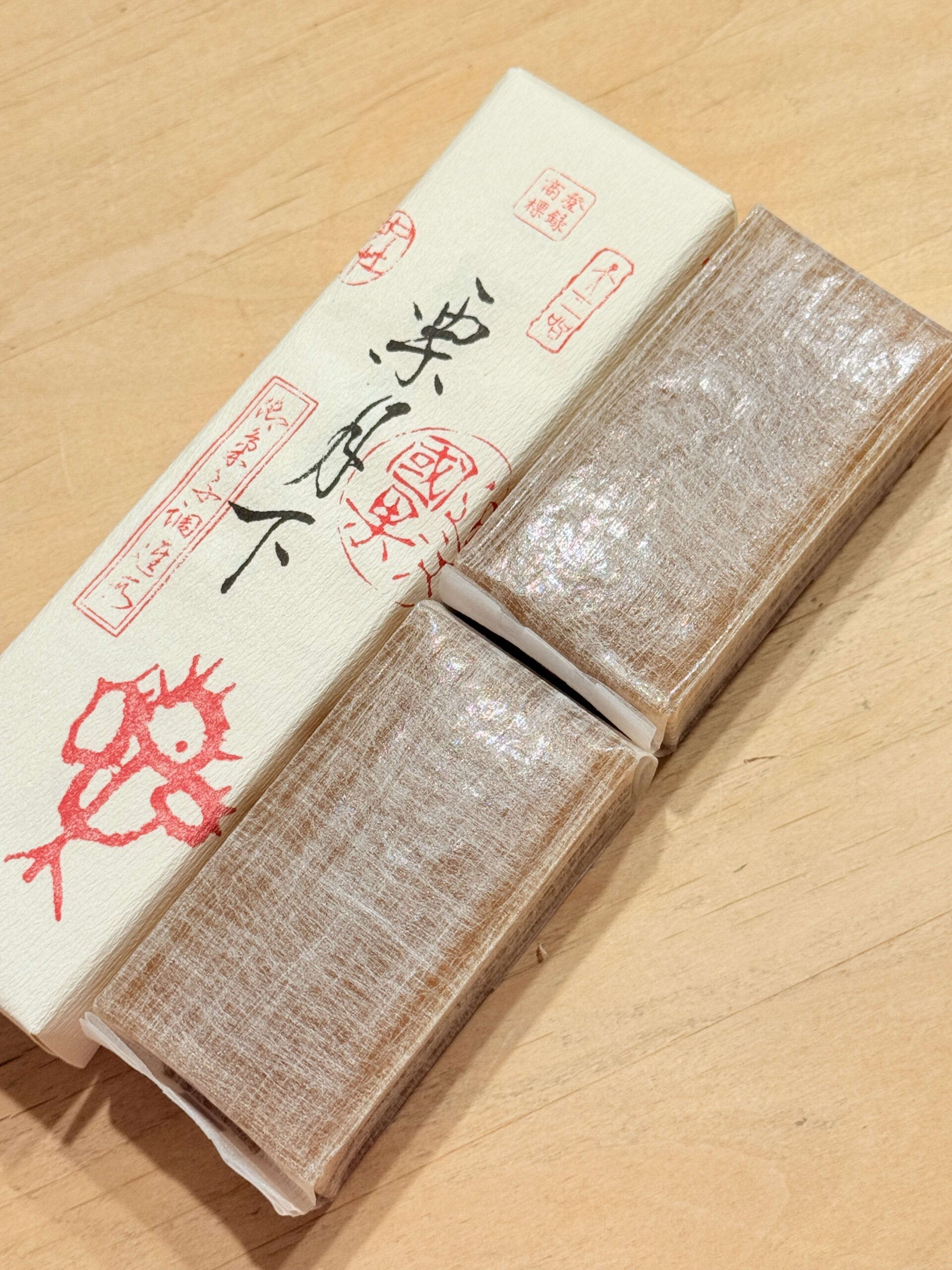An Autumn Quest for Taneya’s Seasonal Sweets
On a crisp October afternoon, with the palpable sense of autumn settling over Tokyo, I found myself navigating the elegant bustle of Nihonbashi. My purpose was singular: to acquire a seasonal treasure from Taneya, a venerable *wagashi* (traditional Japanese confectionery) house. As CityNomix, my days are spent in the fast-paced world of digital marketing. For me, moments spent with wagashi—sweets that let you taste the changing seasons—are a vital ritual for resetting my thoughts and finding fresh inspiration.
My journey with Taneya began years ago with a chance encounter with their *dorayaki* (a pancake-like confection). I was particularly captivated by the version with *shiroan* (sweet white bean paste), and since then, Taneya has held a prime spot on my personal list of culinary explorations. I was later impressed by their “Fukumi Tenpei,” a *monaka* where you fill the crispy wafer with bean paste just before eating, preserving its perfect texture. In summer, their cool and refreshing “Taneya Kanten” jelly became a favorite. I had, quite simply, become a devoted fan.
And then comes autumn. This is the season I eagerly await one thing: Taneya’s seasonal sweets, specifically their steamed yokan, “Kuri Gekka.” Its flavor is so profoundly rich and honest, it’s like eating a chestnut itself. This annual pilgrimage led me to the basement food hall of the Nihonbashi Mitsukoshi department store.
A Fateful Encounter: A One-Day-Only Sweet and the Iconic Kuri Gekka
Stepping past the traditional *noren* curtain, I entered a space of refined tranquility. The minimalist yet warm interior, highlighted by a beautiful wooden sign, quietly welcomed me. It’s a sophisticated atmosphere that resonates deeply with the Photomo aesthetic.
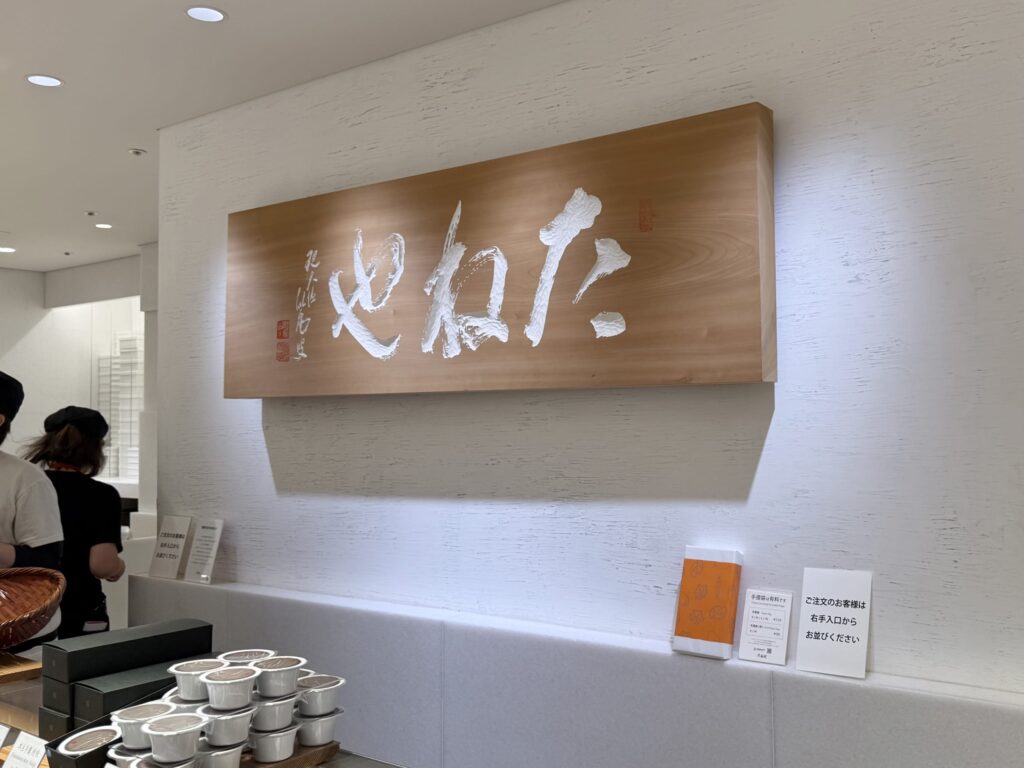
My eyes scanned the beautifully arranged confections as I searched for my target, “Kuri Gekka.” But then, my search came to an abrupt halt. Next to my intended purchase was a small red sign that read, “For sale today only.” It pointed to an adorable, hexagonal yellow box.
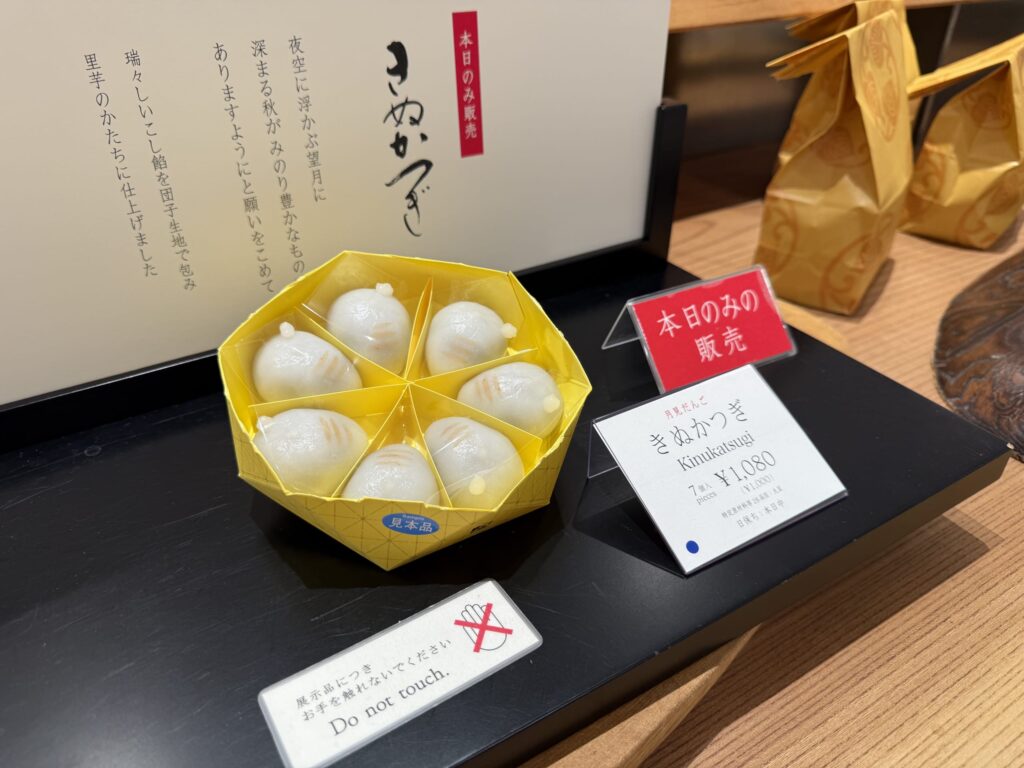
The sweet was called “Kinukatsugi.” It was, I learned, a special moon-viewing *dango* sold only on this day, October 6th, for the *Jugoya* (Mid-Autumn Festival). Shaped to resemble taro root, the confection embodies a lovely concept: admiring the moon while giving thanks for the autumn harvest. I was completely captivated by this ephemeral treat, a once-in-a-year encounter.
To my astonishment, it was the very last one in the display case. It felt like a serendipitous moment, as if it had been waiting for me. Without hesitation, I asked for it, along with my original objective, the quintessential autumn **limited edition**, “Kuri Gekka.”
A Taste of Next Month’s Delights
As I waited, a friendly staff member leaned in and shared a secret. “We’ll have another one-day-only sweet next month, too.” She showed me an announcement for “Kuri Meigetsu,” a confection available exclusively on November 2nd, celebrating the Thirteenth Night moon. This one, she noted, could be reserved in advance. This thoughtful service, building anticipation for the next seasonal delight, is another part of Taneya’s charm.
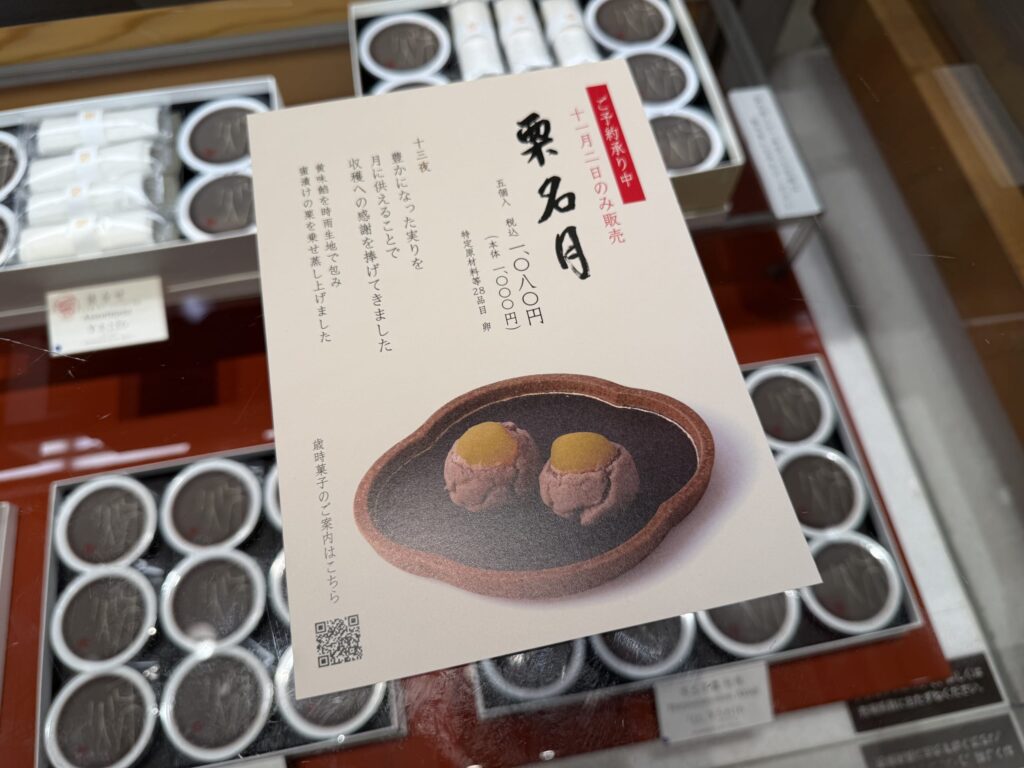
Unboxing Autumn: A Story That Begins with the Packaging
Back home, I carefully arranged my treasures on the table. First, the impulse—or rather, fated—purchase: the “Kinukatsugi.”
The vibrant yellow octagonal box, adorned with a geometric pattern, was a work of art. An elegant gold band and a red seal gave it the feel of a small treasure chest. The packaging alone is beautiful enough to be a perfect gift, an example of Japan’s exquisite design sensibility.
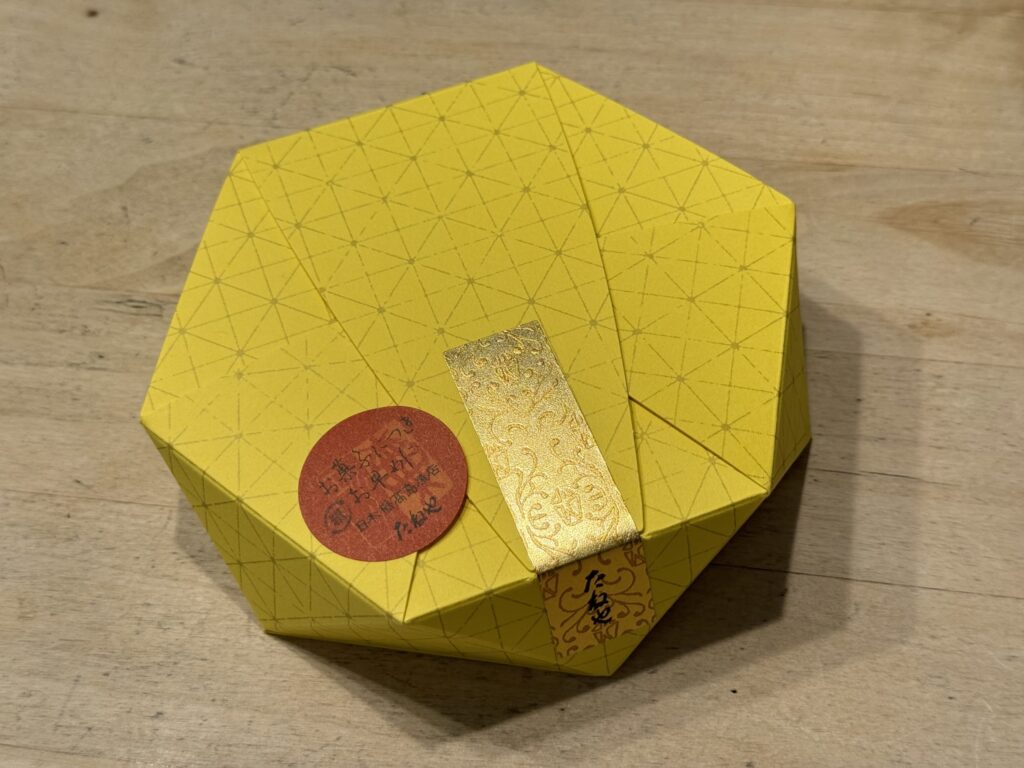
Opening it was a delightful surprise. The box unfolded like a flower, revealing seven small, rabbit-shaped dumplings, each nestled in its own compartment. Their plump, translucent forms were almost too cute to eat. The first bite revealed a refined, smooth red bean paste, perfectly balanced by the chewy texture of the dango. It was an unforgettable taste of the season.
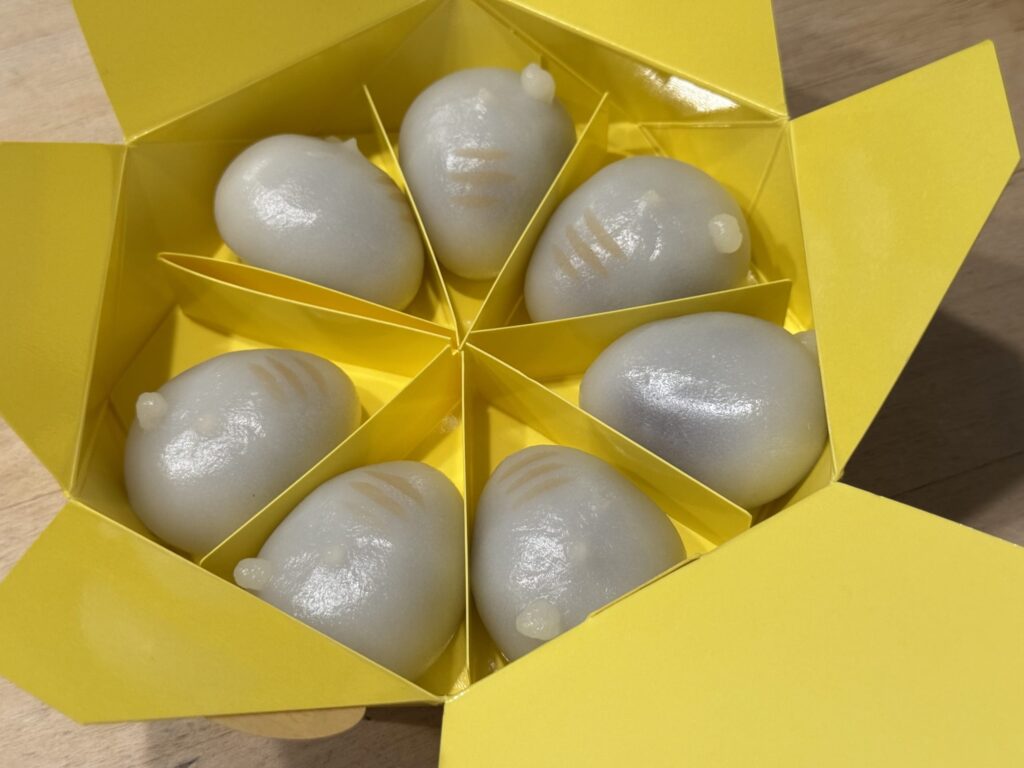
What is wagashi? The Profound Flavor of Taneya’s Seasonal Sweets
Now, for the main event: **Taneya’s seasonal sweets** classic, “Kuri Gekka.” *Wagashi* are traditional Japanese confections, often served with tea. They are typically made from plant-based ingredients like azuki bean paste, rice flour, and fruit, and their designs and flavors often reflect the current season. “Kuri Gekka” is a perfect example of autumn *wagashi*.
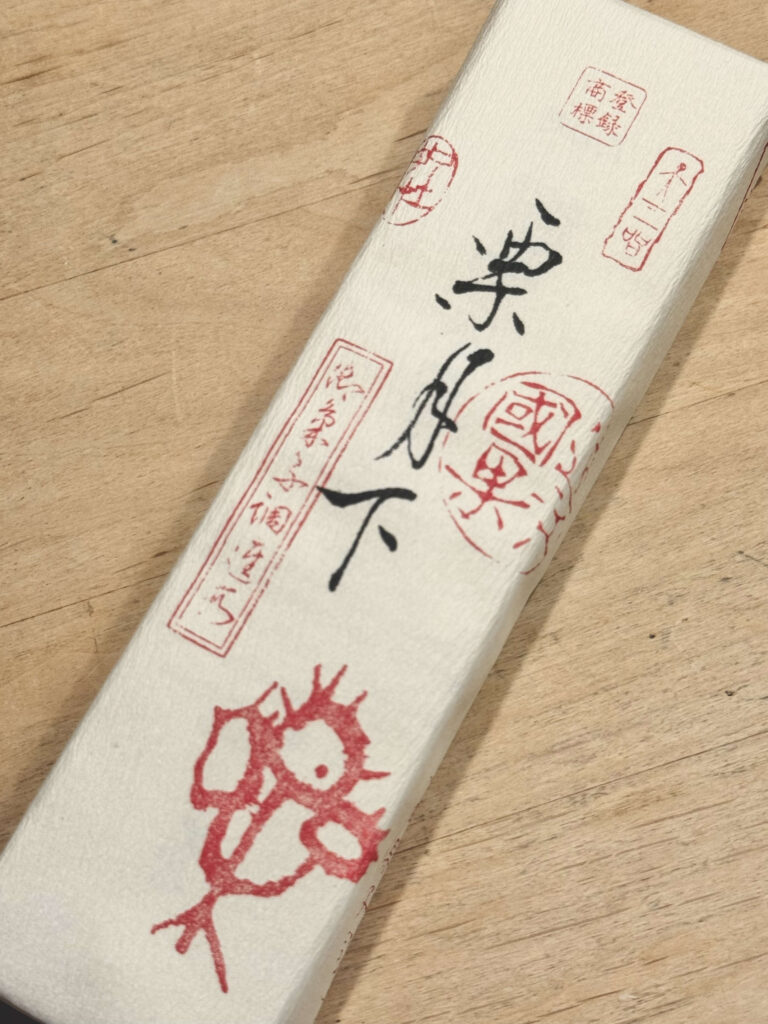
The packaging itself, an elegant white *washi* paper stamped with powerful calligraphy and a dragon seal, heightens the sense of anticipation. Inside, carefully wrapped in thin paper, is the glossy chestnut yokan. The moment you slice into it, you feel its density—a clear sign of how packed with chestnuts it is. The flavor is an explosion of rich, nutty chestnut, with a gentle sweetness that comes from the ingredient itself, not from excessive sugar. It’s less like a jelly and more like the pure, concentrated essence of chestnut. For me, autumn in Tokyo doesn’t truly begin until I’ve had my first taste of “Kuri Gekka.”
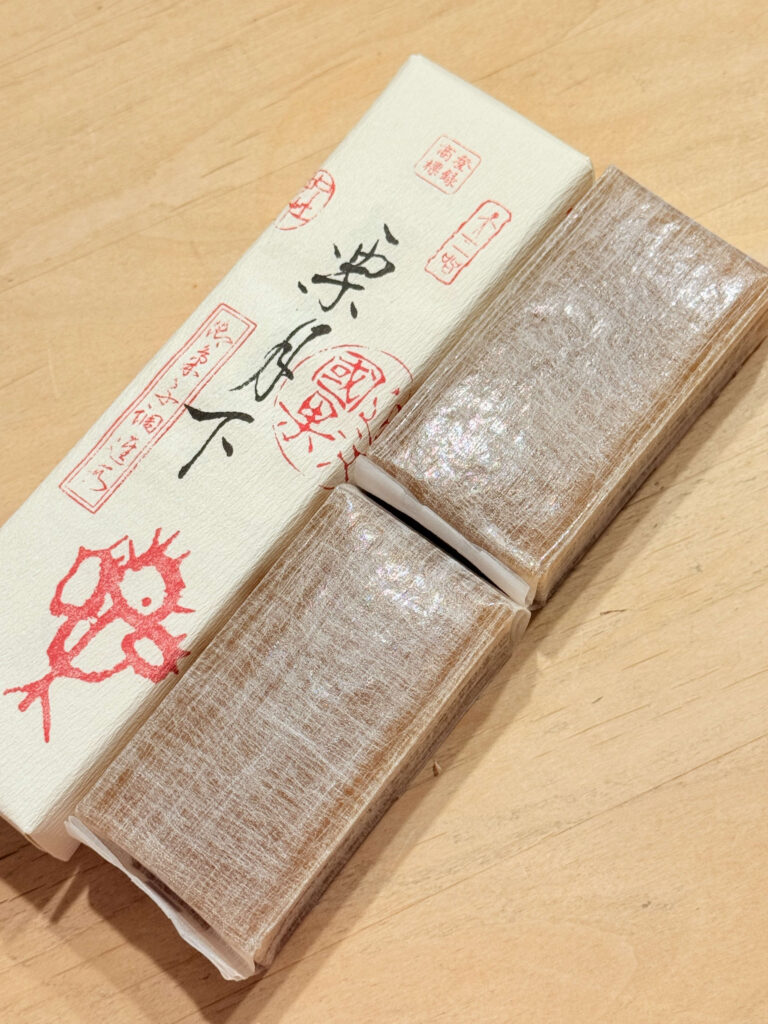
A Guide to Finding Wagashi in Japan
For travelers and connoisseurs, navigating the world of *wagashi* can be a delightful journey. Here are a few tips based on my experience.
Where to buy wagashi in Japan
You can find wagashi all over Japan, but for high-quality, seasonal creations, a visit to a renowned confectioner like Taneya is a must. One of the best places to start is the basement food hall (*depachika*) of a major department store, like Mitsukoshi in Nihonbashi, Tokyo. These halls are curated showcases of the country’s finest foods, making them a convenient and reliable place to explore.
Taneya has branches in many major cities, as well as an online store for those in Japan. Their shops are oases of calm and beauty, offering a wonderful shopping experience.
Taneya Nihonbashi Mitsukoshi Location
Address: B1F, Mitsukoshi Nihonbashi Main Store, 1-4-1 Nihonbashi-Muromachi, Chuo-ku, Tokyo 103-8001
Access: 1-minute walk from Mitsukoshimae Station (Tokyo Metro Ginza & Hanzomon Lines)
Google Map:
Exploring the world of Wagashi: Daifuku, Recipes, and Tea Houses
While my recent purchase was yokan and dango, the world of *wagashi* is vast. Many visitors seek out the *best daifuku in Tokyo*—a soft mochi cake filled with sweet bean paste. While Taneya is known for other specialties, the quality of their ingredients is a benchmark for excellence.
For those interested in a *wagashi recipe*, creating something of Taneya’s caliber at home is a formidable challenge, as master confectioners train for years. However, trying a simpler recipe can be a fun way to appreciate the craft.
If you’re looking for a *wagashi tea house in Tokyo*, many department stores have adjacent *kissa* (tea rooms) where you can enjoy your purchased sweets with a bowl of matcha. It’s the perfect way to complete the experience.
Why Taneya’s Seasonal Sweets are a Must-Try Autumn Experience in Tokyo
My visit to Taneya was more than a simple shopping trip; it was a rich, multi-sensory experience. The thrill of discovering a **limited edition** moon-viewing dango, and the comforting, unchanging perfection of a seasonal classic. These moments are gentle reminders of the beauty of the seasons and the joy of serendipitous encounters—things easily lost in our busy lives.
Walk, shoot, write. Through the process that Photomo cherishes, I was able to capture a small piece of the seasonal story that Taneya tells. If you find yourself in Tokyo during the autumn, I urge you to seek out Taneya’s seasonal sweets. I promise, an unforgettable taste of Japanese culture awaits.

